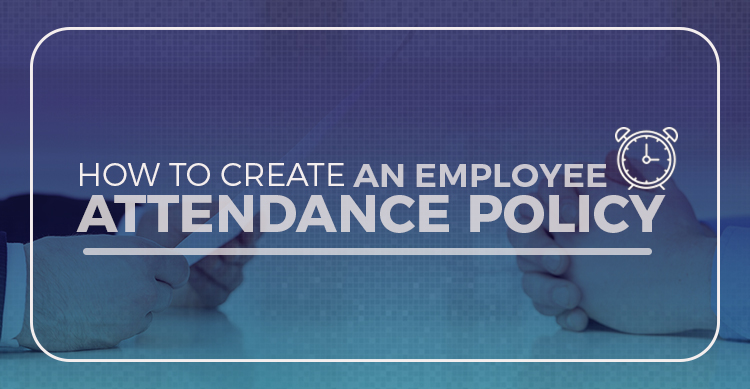
Running late for work? Slept through your alarm? Took a wrong turn? Not keeping well? These things are common and happen with all – even the best of employees.
But, if you add up the consequences of this faltering employee attendance system, it can result in large productivity losses. There may be an unexpected absence once a month but in aggregation, it can lead to big repercussions for your bottom line.
Most organizations today realize the importance of having an official employee attendance policy. A written employee attendance policy makes life easier and business more productive. Here are some tips that will help you understand where you must begin with formulating your attendance policy.
Essentials of an Employee Attendance Policy
1. Working Hours
Define the format for a day at work. Is there a start time? Does the day end at a specific time? Can the employees choose flexible hours of work – 10 to 6, 11 to 7, for instance?
Do they need to complete a set number of hours? List the answers to all such questions in writing. Specify the number of working hours an employee needs to complete.
In certain retail and food outlets, there are rotating shifts. Clarify when, how and where do employees need to report the shift timings. Also, mention the procedure to sign in/sign out so that all working hours are correctly marked.
2. Describe terms for late
When is an employee late? Is there a grace period before late is marked? After what time is the employee marked absent instead of late? How does an employee inform if he/she is getting late? Who needs to be informed?
What is the procedure – email, text, or call? Is it necessary to find a replacement for the absence? Having all these aspects mentioned in the employee attendance policy will ensure that you do not suffer from frequent absenteeism and tardiness.
3. Employee benefits
Define the policies for paid and unpaid leaves. How many paid leaves per month? What happens when the paid leaves lapse? Is there a way to accrue paid leaves? Employees must know how to request leave. Be sure to explain all policies related to vacation leaves, medical leaves, blackout periods, and more.
4. Vacation and annual leave
The employee attendance policy must cover all information pertaining to paid holidays and floating holidays. If some holidays or events are without pay, ensure that the employees are aware of the same. Be sure to mention religious leaves, maternity leaves, and wedding leaves policy.
5. FMLA leave
Some organizations fulfill FMLA leave policies. List the qualifications and processes for an employee to avail the same. Include military FMLA as well if your business meets the requirements.
While your employee attendance policy will have information about FMLA criterion, designate one person to take care of all FMLA-related queries.
6. State Laws
Some state and governments allow leaves for social welfare. These include volunteering or blood donation activities. Some local governments also consider attendance at school events as a permitted leave. Take a look at the laws of your state and write them down in the employee attendance policy.
7. Disciplinary action and consequences
Your employee attendance policy must end with the consequences of violating policies. If an employee does not adhere to a particular policy, what disciplinary action is he/she liable to face?
Mention each and every step so that no employee can question the action. Also, with steps and processes clearly mentioned, chances of claims of impartiality and favoritism are less.
While there are several other things that you would like to include in the employee attendance policy, these are the essentials you must start with. They place you on the right track to guide employees on their behaviour of absenteeism.









